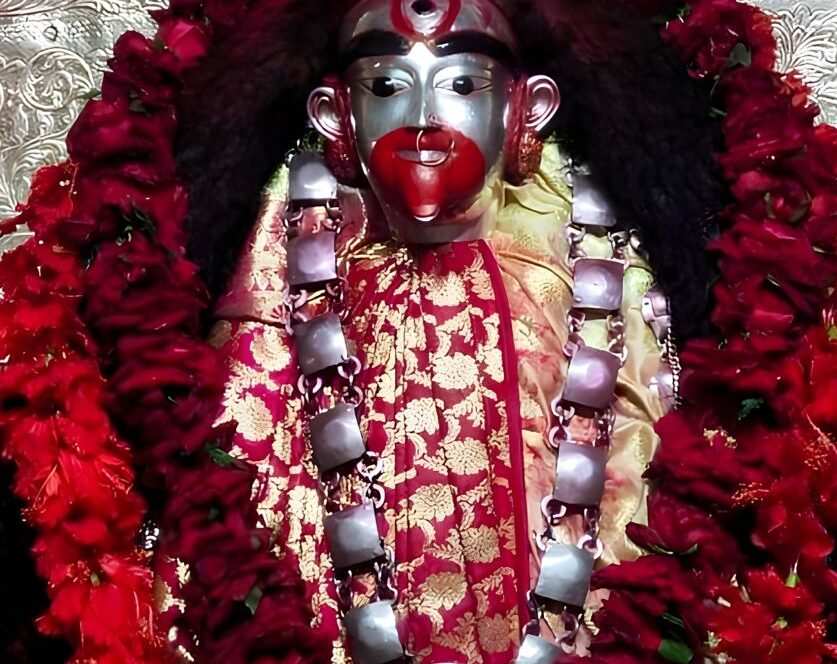From today starts the Ambubachi mela in Nilachal Parvat (blue mountain) of kāmākhyā, Kamrupa. Just like the Kumbha Mela is the great Hindu religious congregation open for all, Ambubachi is regarded as the biggest religious festival for those who have taken to the path of Tantra sadhana. Kamakhya is one of the 4 greatest śakti pīṭha-s in the Indian subcontient of ancient times. By some accounts this is the place where vāmācāra sadhana orginated, not only for Hindus but for many streams of Tibetan Buddhism. Every single śakti pīṭha is linked to a body part of śakti, kāmākhyā is linked to the Yoni – womb – from where all creation proceeds. Therefore kāmākhyā has always enjoyed a place great importance and reverence in kālīkula sampradaya-s, sabar parampara-s and the original Nath sampradaya sadhanas. The garba griha of this śakti pīṭha does not contain any vigraha, but an undergound cave with a constant flowing water. In the Tantra mata certain places like caves, crossroads, deserted cremation grounds, forests, hills, or places next to a north-flowing river are specially significant for sadhana. Kāmākhyā’s geography renders it extremely potent for a wide variety of such Tantric sadhana-s, apart from the spiritual power that originally resides in this blue-mountain. During the 4 days of Ambubachi the water inside the garba griha turns reddish in color. Whatever maybe its scientific explanation, this naturally occuring phenomenon is regarded as symbolic of a woman’s menstruation, hence the temple remains closed, and all fire rituals are strictly barred. In honor of Devi kāmākhyā all temples are closed in Assam during these 4 days, as also many of the famous Shakti temples in North India, upto Kasi, remain closed. A gathering of nearly 7 lakh + people come to Kamakhya during these 4 days including Tantrics, Aghoris, Nagas, Dasanami Sanyasis, Sahajiya, bauls, members from the office of the Shankara matha-s, and other sundry Shakti sadhaks etc because probably there is no greater celebration of the śāktamata than the Ambubachi mela of kāmākhyā.
Photo: Ambubachi mela 2017, by Jody Travels


